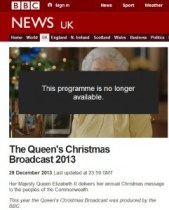It’s finally here: FreeBSD 10.0 with ZFS. I’ve been pretty happy for many years with twin-drive systems protected using gmirror and UFS. It does what I want. If a disk fails it drops it out and sends me an email, but otherwise carries on. When I put a replacement blank disk it can re-build the mirror. If I take one disk out, put it into another machine and boot it, it’ll wake up happy. It’s robust!
So why mess around with ZFS, the system that puts your drives in to a pool and decides where things are stored, so you don’t have to worry your pretty little head about it? The snag is that the old ways are dying out, and sooner or later you’ll have no choice.
Unfortunately, the transition hasn’t been that smooth. First off you have to consider 2Tb+ drives and how you partition them. MBR partition tables have difficulties with the number of sectors, although AF drives with larger sectors can bodge around this. It can get messy though, as many systems expect 512b sectors, not 4k, so everything has to be AF-aware. In my experience, it’s not worth the hassle.
The snag with the new and limitless “GPT” scheme is that it keeps safe copies of the partition at the end of the disk, as well as the start. This tends to be where gmirror stores its meta-data too. You can’t mix gmirror and GPT. Although the code is hackable, I’ve got better things to do.
So the good new is that it does actually work as a replacement for gmirror. To test it I stuck two new 3Tb AF drives into a server and installed 10.0 using the new procedure, selecting the menu option zfs on root option and GPT partitioning. This is shown in the menu as “Experimental”, but seems to work. What you end up with, if you select two drives and say you want a zfs mirror, is just that.
Being the suspicious type, I pulled each of the drives in turn to see what had happened, and the system continues without a beat just like gmirror did. There were also a nice surprises when I stuck the drives back in and “onlined” them:
First-off the re-build was almost instant. Secondly, HP’s “non-hot-swap” drive bays work just fine for hot-swap under FreeBSD/ZFS. I’d always suspected this was a Windoze nonsense. All good news.
So why is the re-build so fast? It’s obvious when you consider what’s going on. The GEOM system works a block level. If the mirror is broken it has no way of telling which blocks are valid, so the only option is to copy them all. A major feature of ZFS, however, is that the directories and files have validation codes in the blocks above, going all the way to the root. Therefore, by starting at the root and chaining down, it’s easy to find the blocks containing changed data, and copy them. Nice! Getting rid of separate volume managers and file systems has its advantages.
So am I comfortable with ZFS? Not yet, but I’m a lot happier with it when its a complete, integrated solution. Previously I’d only been using on data drives in multi-drive configurations, as although it was possible to install root on ZFS, it was a real PITA.


